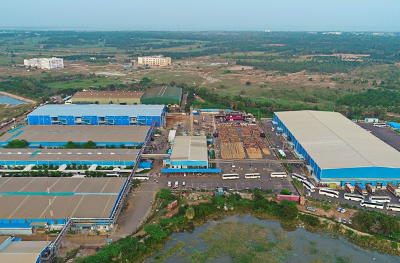(ATF) Global supply chains are being dismantled as the US-China conflict intensifies the hunt for alternative manufacturing bases. But Beijing says it is unperturbed as it pushes to adopt a self-reliant, domestic demand economic model.
The world’s second largest economy has lost market shares in global exports of a vast swathe of goods and its deteriorating trade relations have accelerated the shift in global sourcing to low-cost countries, such as Mexico, Vietnam and Bangladesh, according to a study by global law firm Baker McKenzie.
Meanwhile, China is promoting a new economic model called ‘domestic and international dual circulation’ to be the nation’s development strategy going forward.
These are big shifts in global manufacturing and offshoring practices.
“Relocation has started to appear in Asia, ie. moving or adding a production line from China to other Asian economies,” ING Bank’s chief economist for Greater China Iris Pang said.
Last year, China lost 4% of its global consumer goods and retail (CGR) export market share, 2% in the industrial, manufacturing and transport (IMT) sector and 2% in the IMT sector, according to the Baker McKenzie study.
Southeast Asia, Europe and Latin America grew by 1% each in CGR, while Latin America gained 1% in IMT and both Southeast Asia and Europe gained 1% each in TMT.
The acceleration is also on account of the coronavirus pandemic, which has now seen more than 22.5 million people worldwide infected and claimed over 788,000 lives.
“Whether companies are looking to enter or move supply chain operations around or away from the Asia Pacific region, they are increasingly motivated to secure lower-cost suppliers and focus their efforts on maintaining their financial health in the short to medium-term,” a report from Baker McKenzie said.
Globalisation to localisation
A BofA Securities survey found the trend of globalisation to localisation, which was just a trickle on the heels of the US-China dispute had turned into a stampede following the pandemic.
More than 80% of the sectors to which those surveyed belong, experienced supply chain disruptions during the pandemic, prompting three-quarters to widen the scope of their re-shoring plans.
The investment bank estimated that a $1 trillion capex cycle, spread over a five-year period, would support the shift of all foreign manufacturing in China, estimated to be around 40% of Chinese exports, that is not intended for consumption in China.
“In effect, foreign firms could continue to be ‘in China, for China’, but would have moved their manufacturing destined for global markets back within national borders, or to alternative jurisdictions,” BofA said.
Moody’s Investors Service said that although China would remain an important source of intermediate input for US companies, the pandemic is likely to accelerate the move to more localised supply chains, which was already occurring in the auto and electronics sectors.
Domestic focus in China
And China is already preparing for the move away from an export-led economy to one driven by domestic demand.
“The Chinese economy has relied more on domestic demand and supply. Growth has been seen in industrial production, retail sales and infrastructure stimulus projects. It is this GDP growth in 2Q20 that gives room to the PBoC to stay put. Behind this is a big fiscal stimulus,” said ING’s Pang, who expects the central bank to stay put for the rest of the year.
As the focus shifts from exports to domestic consumption and given the rapid economic recovery, policymakers see little need to engineer a cut in bank lending rates with the PBoC’s decision to not lower the rate on its medium-term lending facility (MLF) this month. Banks which base their loan prime rate on this benchmark, kept their lending rates unchanged this week.
“A re-emphasis on reform will prevent the authorities from launching a full-fledged counter-cyclical stimulus because the policymakers will care more about the longer-term trend than just a cycle over the next five years,” ANZ economists Zhaopeng Xing and Raymond Yeung said in a note.
“Increased ‘home circulation’ means more outputs will be consumed by local households rather than more affluent foreign buyers. We suppose that Chinese policymakers will spend more on them to boost the domestic market amid higher trade barriers in the next five years,” they said, referring to the digital economy as a source of increasing returns to scale.
China’s digital transformation is expected to be the single largest contributor to the country’s GDP growth between now and 2025.
























